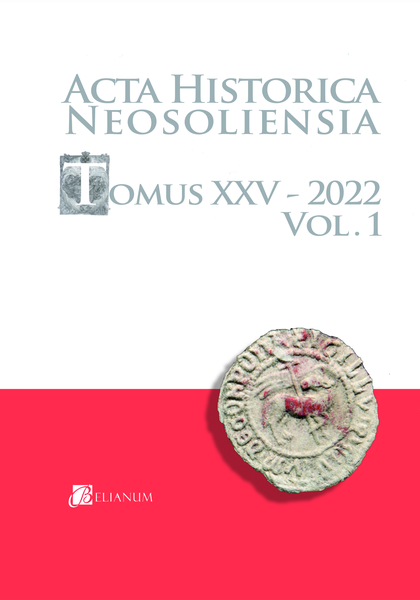K problematike pečatného symbolu a erbu mesta Krupina
MIROSLAV LUKÁČ
Múzeum Andreja Sládkoviča v Krupine
On the issue of the seal symbol and coat of arms of the town of Krupina
Abstract: The author discusses the existence and dating of the Krupina town’s seals and the motivations for accepting the seal symbol (later the coat of arms as well) of the Lamb of God of Krupina, whereas based on the analogies of towns in Hungary or abroad he contemplates the influence of the paradigm of medieval society and its focus on eternal life that leads to the Kingdom of heaven to the Savior, Jesus Christ. The author points to the possible connection of the symbol with the church dedication of the main parish church of the Blessed Virgin Mary. He also deals with the view of older literature, which derived its acceptance into the seals of the town from the coins of Hungarian rulers who were associated with the origins of the town of Krupina. Jesus Christ (symbolically depicted as the Lamb of God) is an attribute of the Virgin Mary in Christian iconography and was constantly depicted together with the mother, Virgin Mary, similarly to the fashion it was implemented in Krupina. At the same time, the Lamb was a symbol of the heavenly Jerusalem, a perfect city, which was a model and ideal of the earthly city, and thus of the community of the Krupina townspeople. The authority of the Savior is thus symbolically linked to the authority of the king and also to the authority of the burghers, as well as to the legal force of the documents they issued. This could have been one of the motivations of the Krupina townspeople to adopt this symbol into the seals of the town. At the same time, it is possible to assume an increase in the influence of rectors of the main parish church in the town, who probably performed the duties of the first notaries of the town of Krupina.
Keywords: seal symbol, coat of arms, Lamb of God, town of Krupina, towns in Hungary, church dedications, Hungary, Slovakia, Middle Age, 13th – 16th century.
Archív
Úplné textové verzie vo formáte PDF
- Acta historica Neosoliensia - Tomus 26, num. 1
- Acta historica Neosoliensia - Tomus 25, num. 2
- Acta historica Neosoliensia - Tomus 25, num. 1
- Acta historica Neosoliensia - Tomus 24, num. 2
- Acta historica Neosoliensia - Tomus 24, num. 1
- Acta historica Neosoliensia - Tomus 23, num. 2
- Acta historica Neosoliensia - Tomus 23, num. 1
- Acta historica Neosoliensia - Tomus 22, num. 2
- Acta historica Neosoliensia - Tomus 22, num. 1
- Acta historica Neosoliensia - Tomus 21, num. 2
- Acta historica Neosoliensia - Tomus 21, num. 1
- Acta historica Neosoliensia - Tomus 20, num. 2
- Acta historica Neosoliensia - Tomus 20, num. 1
- Acta historica Neosoliensia - Tomus 19, num. 2
- Acta historica Neosoliensia - Tomus 19, num. 1
- Acta historica Neosoliensia - Tomus 18
- Acta historica Neosoliensia - Tomus 17
- Acta historica Neosoliensia - Tomus 16
- Acta historica Neosoliensia - Tomus 15
- Acta historica Neosoliensia - Tomus 14
- Acta historica Neosoliensia - Tomus 13
- Acta historica Neosoliensia - Tomus 12
- Acta historica Neosoliensia - Tomus 11
- Acta historica Neosoliensia - Tomus 10
- Acta historica Neosoliensia - Tomus 09
- Acta historica Neosoliensia - Tomus 08
- Acta historica Neosoliensia - Tomus 07
- Acta historica Neosoliensia - Tomus 06
- Acta historica Neosoliensia - Tomus 05
- Acta historica Neosoliensia - Tomus 04
- Acta historica Neosoliensia - Tomus 03
- Acta historica Neosoliensia - Tomus 02
- Acta historica Neosoliensia - Tomus 01

